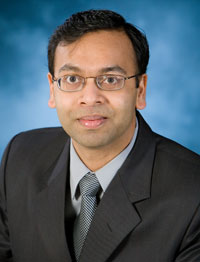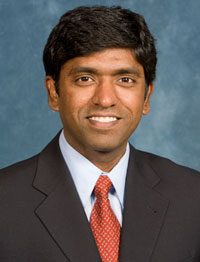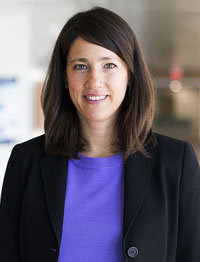Assistant Professors Shorya Awtar, Pramod Sangi Reddy and Kathleen Sienko have been awarded National Science Foundation CAREER Awards, the Foundation’s most prestigious awards for new faculty.
CAEREER Awards support the early career development activities of teachers and scholars with the potential for academic leadership. Recipients are selected on the basis of high-impact research and their ability to incorporate it into the educational mission of their home institution.
Shorya Awtar: Elastic Averaging: A Nature-inspired Methodology for Flexure Mechanism Design.

Elastic averaging, a design paradigm enabled by distributed compliance, makes jointless structures inherently robust and high-performing despite local failure and defects—for example, the millions of setae on gecko feet, or the intricate web of a spider. Shorya Awtar plans to create a mathematical foundation for understanding and leveraging elastic averaging in the analysis and synthesis of parallel-kinematic flexure mechanisms.
Flexure mechanisms are ‘engineered’ jointless structures that rely on elastic deformations to provide small but smooth and precise motions. Their lack of friction, wear, and backlash makes them essential elements of machine design. In the design of flexure mechanisms, elastic averaging represents a radical shift from long-standing exact constraint design principles and opens up a new, so far unrecognized, design space.
Awtar will leverage this research to create technological innovations in applications including nanopositioning systems, minimally invasive surgical tools and turbomachinery seals
This CAREER award will also help Awtar establish research collaborations, recruit doctoral students, and continue his outreach activities with the Ann Arbor Hands-On Museum. As part of his plan, Awtar will redesign undergraduate-level Design & Manufacturing II (ME350) and graduate-level Mechatronic Systems Design (ME552) to incorporate modern multi-disciplinary machine design practice.

Pramod Sangi Reddy: Heat and Charge Transport in Metal-Molecule-Metal Junctions
Pramod Sangi Reddy’s project will explore the transport of heat and charge transport phenomena in nanometer- sized molecular junctions. He will work to develop an experimental technique to enable the study of novel phenomena that are expected to arise in nanometer-sized molecular junctions. Using his techniques, experiments will subsequently be conducted on a variety of single molecule and multiple molecule junctions to elucidate—for the first time— the relationship between the structure of molecular junctions and their thermal transport and thermoelectric properties. Reddy’s work will potentially impact the field of thermoelectric energy conversion; once the dependence of transport properties on the structure of the molecular junctions is understood, it will be possible to tune the heat and charge transport in these junctions to create inexpensive and efficient thermoelectric materials.
Kathleen Sienko: Improving Postural Balance and Rehabilitation Outcomes Using Vibrotactile Sensory Substitution

Kathleen Sienko’s project will focus on the evaluation and use of vibrotactile feedback to improve balance impairments among the elderly and those with vestibular deficits, peripheral neuropathy, traumatic brain injuries, or history of stroke. The goals of her research are to design and build a sensory substitution platform to augment current balance rehabilitation best practices and to assess the capability of sensory substitution to improve stability. She also will evaluate the associated cognitive workload, effects on fall prevention and retention of balance improvements over time.
Sienko “hopes to ultimately develop an ergonomic, affordable and wearable sensory substitution prototype to enable balance-impaired individuals to perform activities of daily living with improved quality of life.” Used in a rehabilitation setting, the device could impact the rate and extent of balance function recovery. Her project emphasizes end-user input during engineering design through collaborations with several medical centers and universities. She also will apply the co-creative design process to the design of low-cost medical technologies for resource-limited settings through education initiatives such as the Multidisciplinary Design Minor: Global Health Design Specialization she helped to create.


